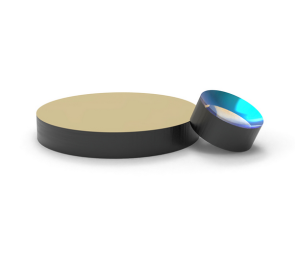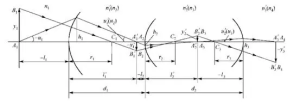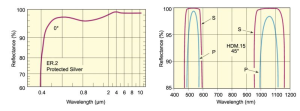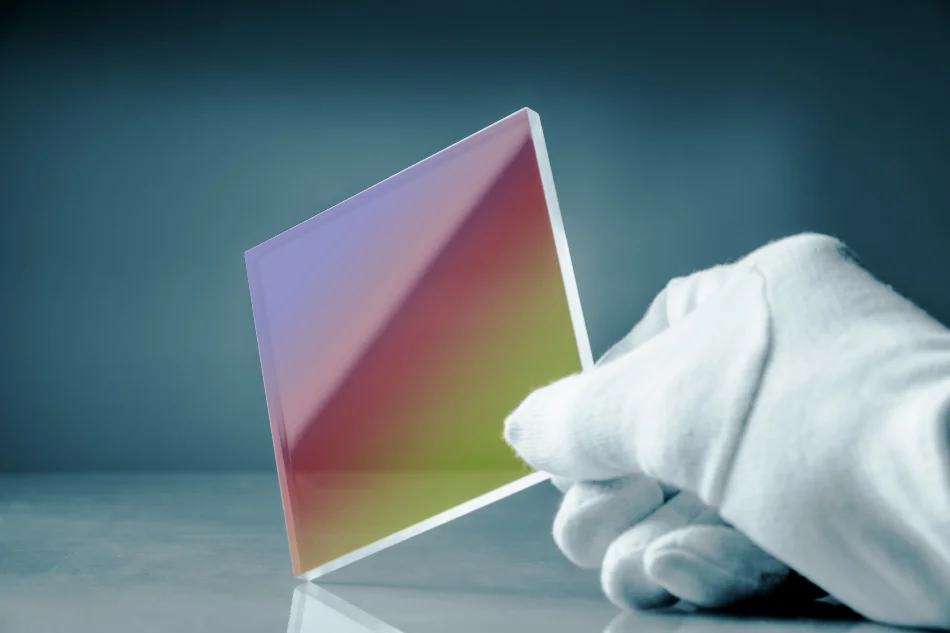
The application of thin film and optical devices in our daily life; For example, glasses, digital cameras, various household appliances, or anti-counterfeiting technology on banknotes can be called the extension of the application of optical thin film technology. Without optical thin film technology as the basis for development, modern photoelectric, communication or laser technology will not be able to make progress, which also shows the importance of the research and development of optical thin film technology.
Optical thin film refers to the preparation or coating of one or more layers of dielectric film or metal film or a combination of these two films on optical elements or independent substrates to change the transmission characteristics of light waves, including light transmission, reflection, absorption, scattering, polarization and phase change. Therefore, through appropriate design, the transmittance and reflectivity of the surface of components in different bands can be adjusted, and the light in different polarization planes can have different characteristics.
Generally speaking, the production methods of optical films are mainly divided into dry process and wet process. The so-called evaporation of solid materials into a solid surface after coating is completed in a vacuum, for example, the so-called evaporation of raw materials into a solid surface after vacuum processing. The gold, silver or metallic packaging film used for decoration in daily life is the product made by dry coating. However, considering the actual mass production, the application scope of dry coating is less than that of wet coating. The general practice of wet coating is to mix the components with various functions into liquid coating, apply it on the substrate in different processing methods, and then dry and solidify the liquid coating to make the product. In this paper, only the optical film industry of wet coating technology is discussed.
Optical films can be divided into reflective film, antireflection film / antireflection film, filter, polarizer / polarizer film, compensation film / phase difference plate, alignment film, diffusion film / film, brightening film / prism film / condenser, shading film / black-and-white glue, etc. Related derivatives include optical grade protective film, window film, etc.
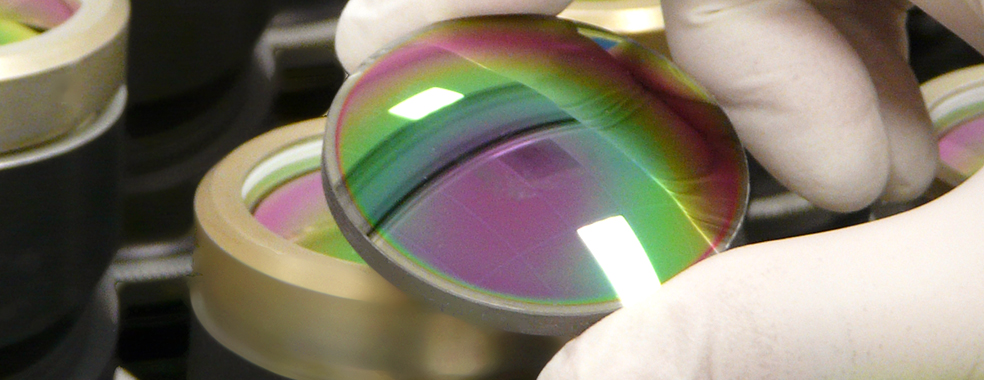
1. Reflective film
Reflective films can generally be divided into two categories: metal reflective films and all dielectric reflective films. In addition, there is a metal dielectric reflective film combining the two, whose function is to increase the reflectivity of the optical surface.
General metals have large extinction coefficient. When the light beam is incident on the metal surface from air, the amplitude of the light entering the metal decreases rapidly, so that the light energy entering the metal decreases correspondingly and the reflected light energy increases. The greater the extinction coefficient, the faster the attenuation of light amplitude, the less light energy entering the metal, and the higher the reflectivity. People always choose metals with large extinction coefficient and stable optical properties as metal film materials. The thin metal materials commonly used in the ultraviolet region are aluminum, aluminum and silver in the visible region, and gold, silver and copper in the infrared region. In addition, chromium and platinum are often used as film materials for some special films. Because aluminum, silver, copper and other materials are easy to oxidize in the air and reduce their performance, they must be protected by dielectric film. Commonly used protective film materials include silicon oxide, magnesium fluoride, silicon dioxide, aluminum oxide, etc.
The advantages of metal reflective film are simple preparation process and wide wavelength range; The disadvantage is that the light loss is large and the reflectivity cannot be very high. In order to further improve the reflectivity of the metal reflective film, several dielectric layers with a certain thickness can be plated on the outside of the film to form the metal dielectric reflective film. It should be pointed out that the metal dielectric film increases the reflectivity of a certain wavelength (or a certain wave region), but destroys the characteristics of neutral reflection of the metal film.
All dielectric reflective film is based on multi beam interference. In contrast to the antireflection film, the reflectivity of the optical surface can be increased by plating a film with a refractive index higher than the base material on the optical surface. The simplest multilayer reflection is formed by alternating evaporation of two materials with high and low refractive index. The optical thickness of each film is one fourth of a certain wavelength. Under this condition, the vibration direction of the reflected light vector on each interface participating in the superposition is the same. The synthetic amplitude increases with the increase of the number of film layers.
Aluminum foil reflective film dike aluminum foil thermal insulation coil, also known as diaphragm, thermal insulation film, thermal insulation foil, heat pulling film, reflective film, etc. It is made of aluminum foil veneer + polyethylene film + fiber braid + metal coating through hot-melt adhesive layer. Aluminum foil coil has the functions of heat insulation, waterproof, moisture-proof and so on. The solar absorption rate (solar radiation absorption coefficient) of aluminum foil thermal insulation coil is very low (0.07). It has excellent thermal insulation performance and can reflect more than 93% of the radiant heat. It is widely used in the thermal insulation of building roofs and exterior walls.
Correspondingly, it is an antireflection film. Its main function is to improve the diffraction of light, so that people can watch words and graphics for a long time. This requires an antireflection film with smooth surface and less reflection.
2. Antireflective film / antireflective film
Antireflection film, also known as antireflection film, its main function is to reduce or eliminate the reflected light on the scientific surface such as lens, prism and plane mirror, so as to increase the light transmission of these elements and reduce or eliminate the stray light of the system.
Antireflection film is based on the fluctuation and interference of light. When two light waves with the same amplitude and wavelength are superimposed, the amplitude of the light wave is enhanced; If the two light waves have the same origin and different wave paths, if the two light waves are superimposed, they cancel each other out. The antireflection film uses this principle to coat the surface of the lens with an antireflection film (AR coating), so that the reflected light generated on the front and rear surfaces of the film interferes with each other, so as to offset the reflected light and achieve the effect of antireflection. The simplest antireflective film is a monolayer. In general, it is difficult to achieve the ideal antireflection effect by using single-layer antireflection film. In order to achieve zero reflection at a single wavelength or achieve good antireflection effect in a wide spectral region, double-layer, three-layer or even more antireflection films are often used.
Antireflection films are widely used in practice. The most common ones are lenses and solar cells – by preparing antireflection films to improve the power watt value of photovoltaic modules. At present, the antireflection film material used in crystalline silicon photovoltaic cells is silicon nitride. Plasma enhanced chemical vapor deposition technology is used to ionize ammonia and silane and deposit on the surface of silicon wafer. It has high refractive index and can play a good antireflection effect. Early photovoltaic cells used silica and titanium dioxide films as antireflection layers.

3. Filter
The filter is made of plastic or glass with special dyes. The red filter can only let the red light pass through, and so on. The refractive index of the glass sheet is similar to that of air, and all color light can pass through, so it is transparent. However, after dyeing with dye, the molecular structure changes, the refractive index also changes, and the passage of some color light changes. For example, when a white light passes through a blue filter, it emits a blue light, while there are very few green and red light, and most of them are absorbed by the filter.
Filter products are mainly classified according to spectral band, spectral characteristics, film material, application characteristics, etc.
Spectral band: ultraviolet filter, visible filter and infrared filter;
Spectral characteristics: bandpass filter, cut-off filter, spectroscopic filter, neutral density filter and reflection filter;
Film material: soft film filter and hard film filter. Dural filter not only refers to the film hardness, but also its laser damage threshold, so it is widely used in laser system. Soft film filter is mainly used in biochemical analyzer.
Bandpass type: the light of the selected band passes through and the light outside the passband is cut off.
Short wave pass type (also known as low wave pass): light shorter than the selected wavelength passes through and light longer than the wavelength is cut off. For example, infrared cut-off filter, ibg-650.
Long wave pass type (also known as high wave pass): light longer than the selected wavelength passes through, and light shorter than the wavelength is cut off, such as infrared transmission filter, ipg-800.
Color filter is an important part of TFT-LCD backlight module.
4. Polarizer
The full name of polarizing film should be polarizing film. The imaging of LCD must rely on polarized light. The main function of the polarizer is to change the natural light without polarization into polarized light and into polarized light. Coupled with the torsion characteristics of liquid crystal molecules, it can control whether the light passes or not, so as to improve the transmittance and viewing angle range, and form anti glare and other functions.
Polarizer can be widely used in modern liquid crystal display products: liquid crystal TV, notebook computer, mobile phone, PDA, electronic dictionary, MP3, instrument, projector, etc. it can also be used in fashion polarizer glasses. Among them, the application of LCD is the main force driving the development of polarizer industry.
5. Compensation film / phase difference plate
The compensation principle of the compensation film is to correct the phase difference generated by liquid crystal in various display modes (TN / STN / TFT (VA / IPS / OCB)) at various viewing angles. In short, it is to compensate the birefringence properties of liquid crystal molecules symmetrically. If it is necessary to distinguish from its functional purpose, it can be slightly divided into phase difference film, color difference compensation film and viewing angle expansion film. The compensation film can reduce the light leakage of LCD in dark state, greatly improve the contrast and chromaticity of image in a certain viewing angle, and overcome the problem of partial gray-scale inversion.

6. Alignment membrane
The alignment film is a film with straight strip scratches, which is used to guide the arrangement direction of liquid crystal molecules (Fig. 1.1). On the glass substrate on which the transparent conductive film (ITO) has been evaporated, use PI coating solution and roller to print a parallel groove on the ITO film. At that time, the liquid crystal can lie across the groove according to the direction of the groove, so as to arrange the liquid crystal in the same direction. The film with one direction is the alignment film.
The reason why liquid crystal can be applied to the screen is that its electric induction rate in the parallel molecular direction is different from that in the vertical molecular direction, so it can be driven by electric field. On the other hand, because liquid crystal also has the refractive index (i.e. birefringence) that varies according to the molecular direction, it can change the polarization direction of polarized light. Finally, there is a strong anchoring strength at the interface between liquid crystal and alignment film, After the electric field is turned off, the liquid crystal will return to the original arrangement by virtue of the elastic coefficient (restoring force). Therefore, it can be seen that the liquid crystal cannot work without the existence of alignment film. However, in the application of liquid crystal screen, its liquid crystal molecules are inclined at a certain angle with the surface of alignment film (i.e. pretilt angle), so as to achieve the effect of uniform alignment.
The coating non roll wet coating involved in the alignment film includes the traditional directional brush grinding method and the current UV light alignment method, electron plasma alignment and ion beam alignment.
7. Diffusion membrane
Diffusion film is a key component in TFT-LCD backlight module, which can provide a uniform area light source for LCD. Generally, the traditional diffusion film is mainly to add chemical particles into the diffusion film substrate as scattering particles, while the particles of the existing diffusion plate are dispersed between the resin layers, so when passing through the diffusion layer, the light will continue to pass through two media with different refractive indexes, so the light will have a lot of refraction Reflection and scattering, which leads to the effect of optical diffusion. See Chapter II for details.
8. Brightening film / prism / condenser
The brightening film is also called prism sheet, often referred to as bef (brightness enhancement film). It is a key component in TFT-LCD backlight module. It mainly uses the principle of light refraction and reflection to correct the direction of light by using prism sheet, so that the light can be concentrated on the front, and the unused light outside the viewing angle can be recycled and utilized, while improving the overall brightness and uniformity to achieve the effect of brightening. It is also called condensing film. The composite optical film mainly integrates the function of the original condensing film with the diffusion function, which will reduce the use of one diffusion film, which is conducive to downstream manufacturers to simplify backlight design, save processes, reduce costs, and improve brightness efficiency. For optical film manufacturers, although the composite brightening film will replace the traditional condenser (brightening film), the unit price and profit are better.
9. Shading film / black and white glue
Black and white light blocking adhesive | light blocking film is mainly used on backlight to fix and block light (block out the light of edge light and lamp position). It is also called light blocking film and black and white film, which is referred to as black and white adhesive (it can be said to be a kind of double-sided adhesive tape). TFT-LCD backlight requires relatively high black-and-white backlight. In addition to black-and-white glue, there is black glue (black on both sides), which is still used for fixing and shading; Black silver glue (single-sided black, single-sided silver), in addition to shading, the silver surface has the function of reflection. Black and white glue is the mainstream product in LCD market. Compared with the viscosity of the black surface and the white surface, the white surface needs to be larger, because the white surface is connected with the rubber frame, while the black surface is connected with the glass. Compared with the adhesion of the glass to the rubber, the rubber frame is worse, so the viscosity of the white surface needs to be larger to ensure the stability of the whole module.
END

